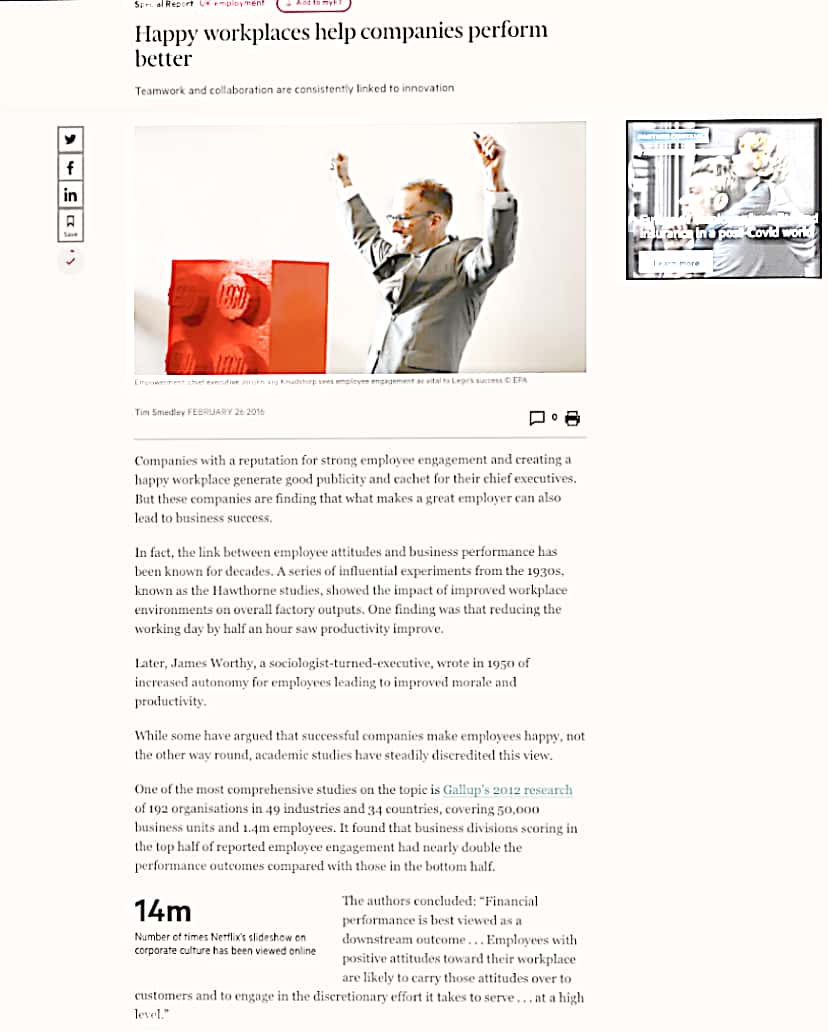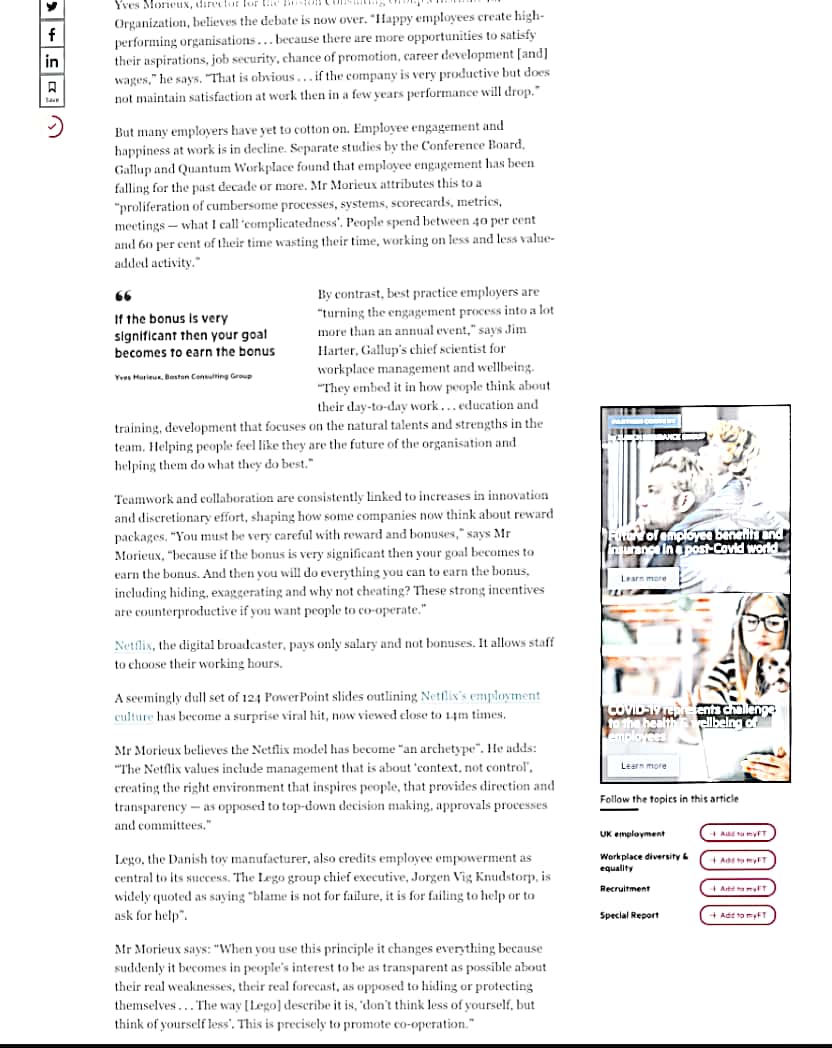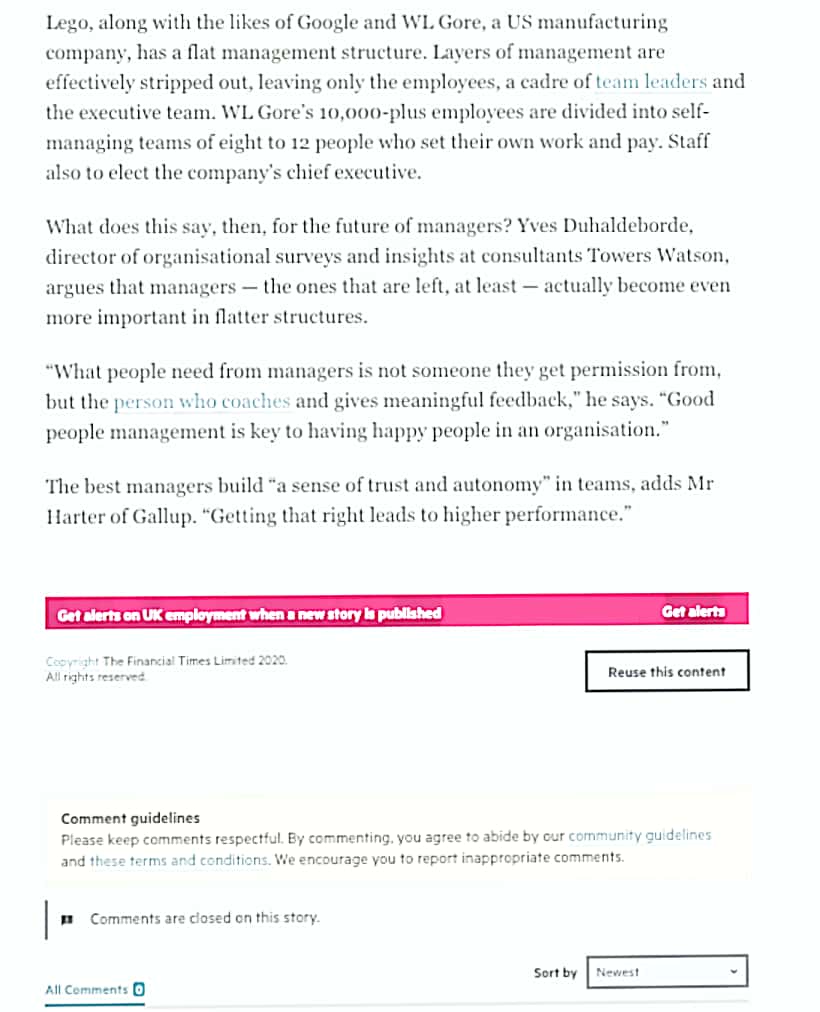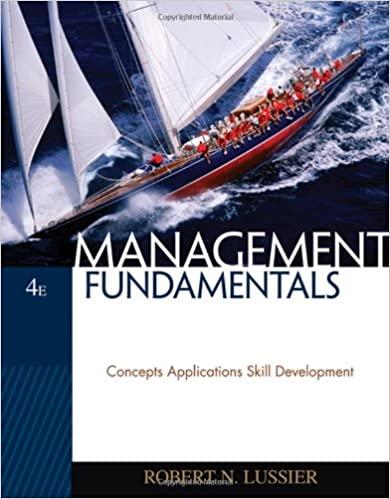Analyze and compare the tone and organization of both articles
1 Point out the similarities and/or differences of the tone and organization of the articles
2 Provide evaluation and judgment on the tone and organization
the two articles for the above mentioned question are mentioned below
Article 1 link:
https://www.nytimes.com/2019/06/17/business/recommendations-diverse-workplace-new-rules.html
Article 2 images:
Happy workplaces help companies perform better Teamwork and collaboration are consistently linked to innovation f in Thurand ina post could world Cirgoverment the earsfive much any bradstore sees mogleyes engagement is vital ta Lepes sinten D FFA Tim Smedley FEEQUARY 2+ 2016 Companies with a reputation for strong employee engagement and creating a happy workplace generate good publicity and cachet for their chief executives. But these companies are finding that what makes a great employer can also lead to business success. In fact, the link between employee attitudes and business performance has been known for decades. A series of influential experiments from the 19305, known as the Hawthorne studies, showed the impact of improved workplace environments on overall factory outputs. One finding was that reducing the working day by half an hour saw productivity improve. Later, James Worthy, a sociologist-turned-executive, wrote in 1950 of increased autonomy for employees leading to improved morale and productivity. While some have argued that successful companies make employees happy, not the other way round, academic studies have steadily discredited this view. One of the most comprehensive studies on the topic is Gallup's 2012 research of 192 organisations in 49 industries and 34 countries, covering 50,000 business units and 1.4m employees. It found that business divisions scoring in the top half of reported employee engagement had nearly double the performance outcomes compared with those in the bottom half. 14m The authors concluded: "Financial performance is best viewed as a Number of times Netflix's slideshow on corporate culture has been viewed online downstream outcome. . . Employees with positive attitudes toward their workplace are likely to carry those attitudes over to customers and to engage in the discretionary effort it takes to serve. . . at a high level."Yves f Organization, believes the debate is now over. "Happy employees create high- performing organisations . . . because there are more opportunities to satisfy in their aspirations, job security, chance of promotion, career development [and] wages." he says. "That is obvious. . . if the company is very productive but does not maintain satisfaction at work then in a few years performance will drop." But many employers have yet to cotton on. Employee engagement and happiness at work is in decline. Separate studies by the Conference Board. Gallup and Quantum Workplace found that employee engagement has been falling for the past decade or more. Mr Morieux attributes this to a "proliferation of cumbersome processes, systems, scorecards, metrics, meetings - what I call 'complicatedness'. People spend between 40 per cent and 60 per cent of their time wasting their time, working on less and less value- added activity." 66 By contrast, best practice employers are If the bonus is very "turning the engagement process into a lot significant then your goal more than an annual event," says Jim becomes to earn the bonus Harter. Gallup's chief scientist for Yoes Marinus, Boston Consulting Group workplace management and wellbeing. "They embed it in how people think about their day-to-day work. . . education and training, development that focuses on the natural talents and strengths in the team, Helping people feel like they are the future of the organisation and helping them do what they do best." Teamwork and collaboration are consistently linked to increases in innovation and discretionary effort, shaping how some companies now think about reward packages. "You must be very careful with reward and bonuses, " says Mr Morieux, "because if the bonus is very significant then your goal becomes to Forms of employee benellis and surance In a post-Covid world earn the bonus. And then you will do everything you can to earn the bonus. including hiding, exaggerating and why not cheating? These strong incentives Learn more are counterproductive if you want people to co-operate." Netflix, the digital broadcaster, pays only salary and not bonuses. It allows staff to choose their working hours. A seemingly dull set of 124 Power Point slides outlining Netflix's employment culture has become a surprise viral hit, now viewed close to 14m times. COVID-19 TERA ents challenge To me health wellbeing of Mr Morieux believes the Netflix model has become "an archetype". He adds: employees "The Netflix values include management that is about 'context, not control". Learn more creating the right environment that inspires people, that provides direction and transparency - as opposed to top-down decision making, approvals processes Follow the topics in this article and committees." UK employment Lego. the Danish toy manufacturer, also credits employee empowerment as Workplace diversity & central to its success. The Lego group chief executive, Jorgen Vig Knudstorp, is equality widely quoted as saying "blame is not for failure, it is for failing to help or to Recruitment Addtomilt ask for help". Special Report + Add to mill Mr Morieux says: "When you use this principle it changes everything because suddenly it becomes in people's interest to be as transparent as possible about their real weaknesses, their real forecast, as opposed to hiding or protecting themselves.. . The way [Lego] describe it is, 'don't think less of yourself, but think of yourself less'. This is precisely to promote co-operation."Lego, along with the likes of Google and WI. Gore, a US manufacturing company, has a flat management structure. Layers of management are effectively stripped out, leaving only the employees, a cadre of team leaders and the executive team. WL Gore's 10,000-plus employees are divided into self- managing teams of eight to 12 people who set their own work and pay. Staff also to elect the company's chief executive. What does this say, then, for the future of managers? Yves Duhaldeborde, director of organisational surveys and insights at consultants Towers Watson, argues that managers - the ones that are left, at least - actually become even more important in flatter structures. "What people need from managers is not someone they get permission from, but the person who coaches and gives meaningful feedback," he says. "Good people management is key to having happy people in an organisation." The best managers build "a sense of trust and autonomy" in teams, adds Mr Harter of Gallup. "Getting that right leads to higher performance." Get alerts on UK employment when a new story is published Get alerts Copyright The Financial Times Limited 2020. All rights reserved Reuse this content Comment guidelines Please keep comments respectful. By commenting. you agree to abide by our community guidelines and these terms and conditions. We encourage you to report inappropriate comments. Comments are closed on this story. All Comments @ Sort by Newest









